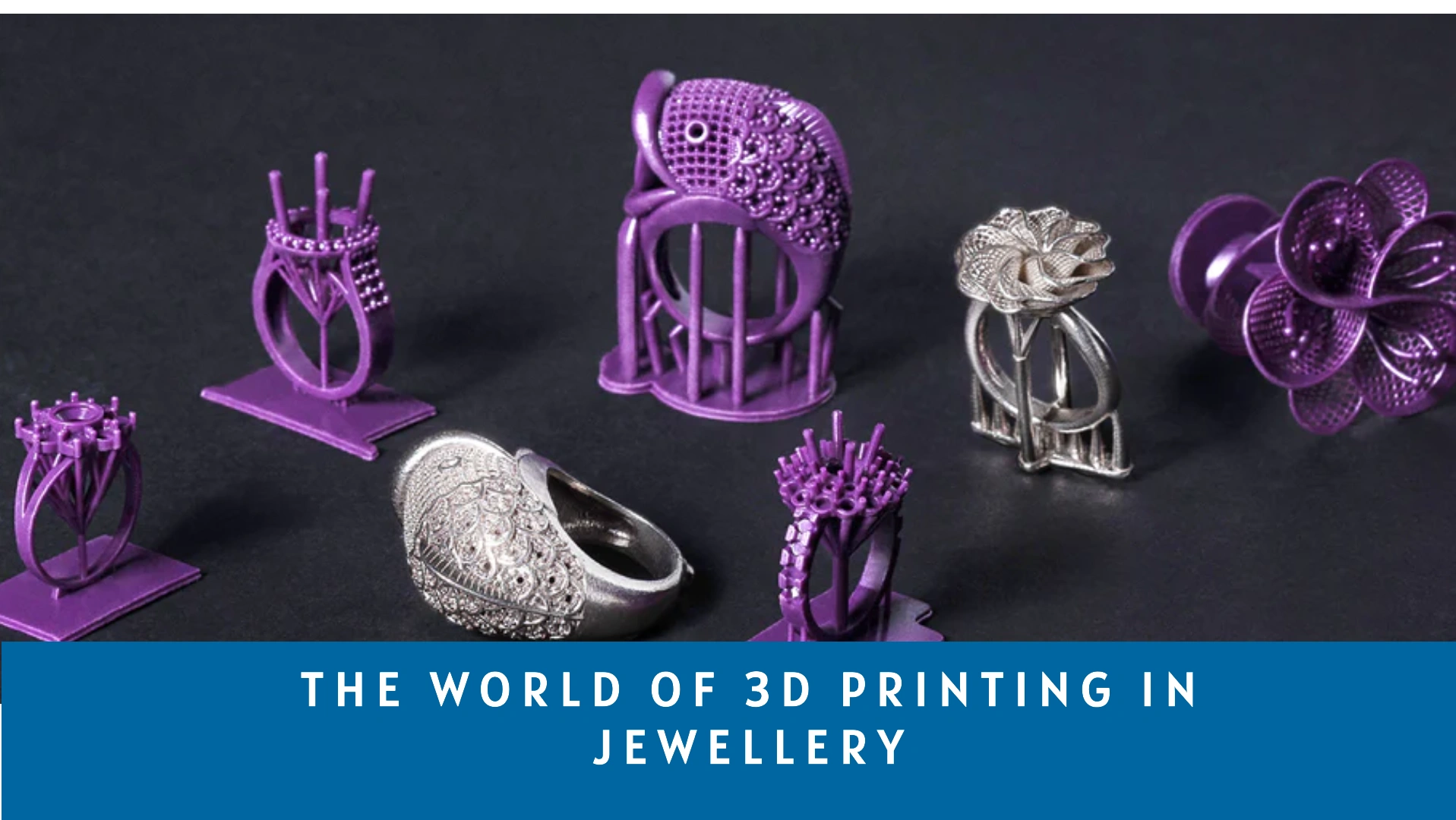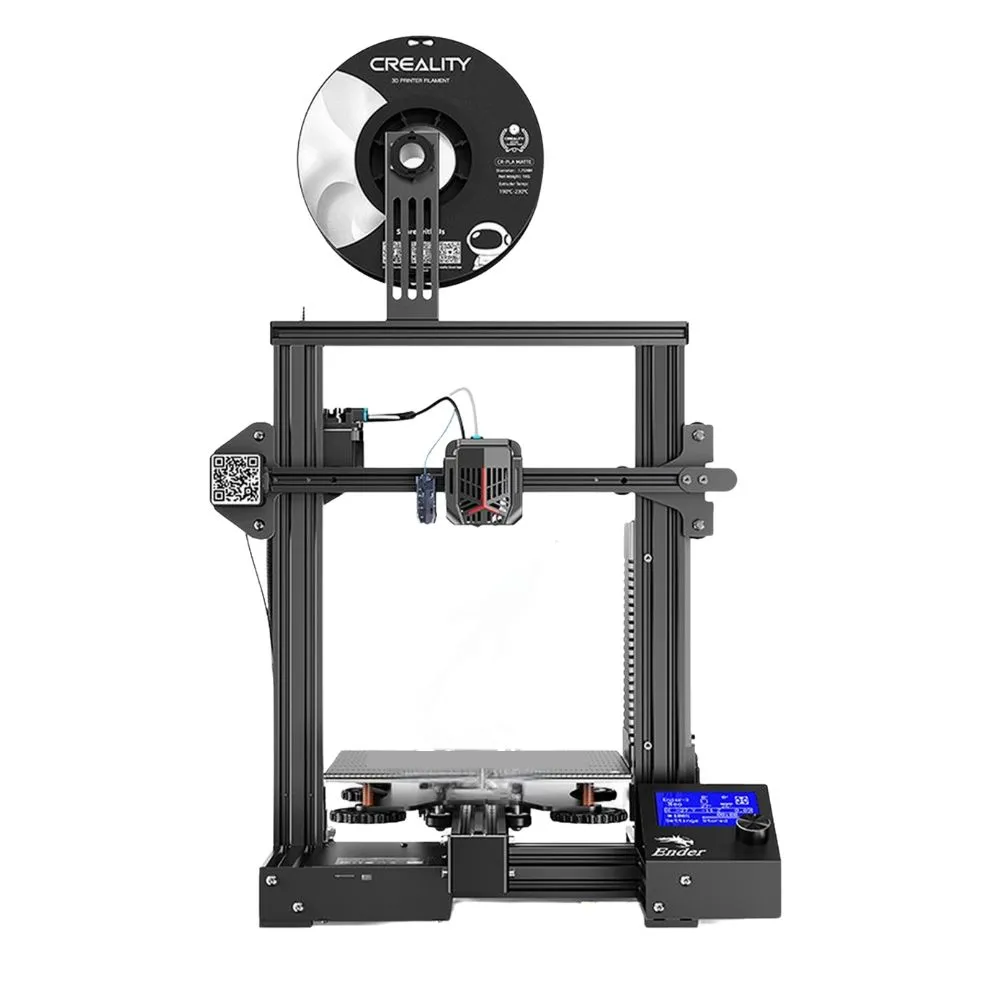Welcome to the amazing world of 3D printing
in jewelry! Technology has changed the way beautiful jewelry is made. 3D
printing lets designers create incredibly detailed and unique pieces in a whole
new way. It's a mix of old-fashioned skill and new technology, allowing
designers to make custom designs and be more eco-friendly. The blog discusses
the impact of 3D printing on the jewelry industry, highlighting its influence
on design, customization, materials, sustainability, and more. Let's find out
how 3D printing is changing jewelry-making and why it's exciting for everyone
involved.
What
makes 3D printing unique in jewelry?
3D printing revolutionizes the jewelry-making
process in several unique ways, making it stand out from traditional methods:
1.
Customization:
It allows for a high level of customization,
enabling designers to create complicated, unique designs that were previously
difficult or impossible to achieve through traditional methods. This opens up a
world of possibilities for personalized and one-of-a-kind pieces.
2.
Complex geometries:
The technology enables the creation of
jewelry with highly complex geometries and intricate details that would be
extremely challenging or even impossible to produce using traditional
techniques. This offers designers the ability to push the boundaries of
creativity and craftsmanship.
3.
Reduced material waste:
Unlike traditional jewelry-making processes
that often result in significant material wastage, 3D printing can be more
resource-efficient, as it allows for precise material usage, reducing waste and
supporting sustainability efforts in the industry.
4.
Faster prototyping:
3D printing streamlines the prototyping
process, allowing designers to quickly iterate and test new designs without the
need for extensive manual labor, thus accelerating the product development
cycle.
5.
Accessible production:
With 3D printing, jewelry-making becomes more
accessible to a broader range of designers and artisans, as the technology
reduces the barriers to entry, particularly for those looking to create
small-batch or custom pieces.
Unleashing
Creative Freedom:
3D printing gives jewelry designers more
freedom to be creative. Unlike traditional methods with certain limitations, it
allows designers to imagine and create more complex shapes and intricate
details. With the help of computer software, designers can easily bring their
ideas to reality. This technology empowers them to go beyond the usual and
create jewelry designs that were previously impossible to make using traditional
methods.
Customization
and Personalization:
With 3D printing, jewelry can be customized
to match each person's style. This means customers can get involved in the
design process and ask for exactly what they want, like the size, shape, and
placement of gemstones. They can even add personal touches to make the piece
truly unique. This way, every jewelry item becomes one-of-a-kind, making it
extra special for the person wearing it.
Can
customers provide design specifics?
Yes, customers can actively participate in
the design process regarding 3D-printed jewelry. They have the opportunity to
provide specific design requirements such as size, shape, gemstone placement,
and material preferences, and even incorporate personal elements into their
custom piece. This level of customer involvement ensures that each jewelry item
is tailored to their unique preferences, making it truly one-of-a-kind and
meaningful to the wearer.
Can
they choose materials?
Yes, customers can indeed choose the material
for their 3D-printed jewelry. With a wide range of materials available for 3D
printing, such as various metals, resins, and even specialty materials like
precious metals, customers have the flexibility to select the material that
best suits their preferences and requirements. This freedom to choose the
material adds another layer of personalization to the jewelry, allowing
customers to create pieces that are not only visually stunning but also align
with their preferences for durability, aesthetics, and value.
Rapid
Prototyping and Iterative Design:
Making jewelry samples used
to be slow and expensive. Now, 3D printing lets designers create quick and
exact models. This helps them see how the jewelry looks, make changes, and get
it perfect before making a bunch. It saves time, money, and ends with happier
customers!
How
does 3d printing in jewelry production contribute to customer satisfaction?
3D printing in jewelry production contributes
to customer satisfaction in several significant ways:
1.
Customization and Personalization:
It enables customers to actively participate
in the design process, allowing them to provide specific design requirements
and incorporate personal elements into their jewelry pieces. This level of
customization ensures that each piece is tailored to the individual's unique
preferences, leading to higher customer satisfaction through personalized
jewelry.
2. Design Flexibility:
With this technology, jewelry designers can
create intricate and unique designs that were once unattainable through
traditional methods. The ability to produce a diverse range of designs that
cater to different tastes and styles increases customer satisfaction by
offering a wider selection of options to choose from.
3. Quality Assurance:
The iterative design process facilitated by
it ensures that jewelry pieces undergo thorough refinement and testing before
production, resulting in high-quality, well-crafted items that meet or exceed
customer expectations. This commitment to quality contributes to customer
satisfaction and trust in the brand.
4. Visual Representation:
Through this technology, designers can create
precise physical prototypes that provide customers with a realistic
representation of the final jewelry piece. This visual representation helps
customers make more informed purchasing decisions and fosters confidence in the
product they are ordering.
5. Reduced Lead Times:
The rapid prototyping capabilities shorten
the design and production timeline, allowing customers to receive their
customized or personalized jewelry in a more timely manner. This efficiency
contributes to customer satisfaction by delivering products within shorter lead
times.
Material
Variety and Innovation:
3D printing provides a wide range of
materials for making jewelry. In jewelry production, a wide variety of
materials can be utilized to create unique and innovative pieces. Some of the
common types of materials used include:
1.
Precious Metals:
- Gold
- Silver
- Platinum
2.
Non-Precious Metals:
- Brass
- Bronze
3.
Resin:
Resin materials offer a range of colors and
finishes, suitable for intricate designs and detailed pieces.
4.
Ceramics:
Ceramic materials provide a unique look and
feel, allowing for the creation of delicate and refined jewelry pieces.
5.
Composite Materials:
Composite materials combine elements to
achieve specific properties, enabling designers to experiment with textures and
structures.
6.
Specialty Metals:
Materials like titanium or stainless steel
can also be used to create modern and durable jewelry pieces.
Sustainable
and Environmentally Friendly:
Jewelry-making can be
wasteful! Lots of leftover materials get thrown away. But 3D printing is like a
special kind of printer that builds jewelry piece by tiny piece, wasting less
material. This cool tech helps make pretty jewelry in a way that's better for
the environment!
Can
you explain layer by layer?
Layer-by-layer is a fundamental concept in 3D
printing that refers to the systematic process of building an object one thin
layer at a time. Here's a detailed explanation of how layer-by-layer printing
works in 3D printing:
1.
Digital Design:
The process begins with a digital 3D model of
the object that needs to be printed. This design serves as a blueprint for the
printer to follow during the printing process.
2.
Slicing:
The 3D model is sliced into numerous
horizontal layers by specialized software. Each layer is like a slice showing a
different part of the finished object.
3.
Printing Process:
The 3D printer begins by making the first
layer of the object right on the build platform. It does this by depositing or
curing the printing material (such as plastic, resin, or metal) in a specific
pattern based on the sliced design.
4.
Layer Bonding:
Once the initial layer is completed, the
printer moves on to the next layer, building on top of the previous one. The
material in each layer fuses or adheres to the layer below it, creating a
strong bond between the successive layers.
5.
Repetition:
The printer repeats the process of depositing
and solidifying material layer by layer, following the precise instructions
from the sliced design. This step-by-step process keeps going until the whole
object is finished.
6.
Complex Structures:
Layer-by-layer printing allows for the
creation of complex geometries and intricate designs that would be challenging
or impossible to achieve with traditional manufacturing methods. Each layer
contributes to the overall structure of the object, leading to the gradual formation
of the final three-dimensional shape.
Can
small jewelers afford 3D printers?
Yes, small jewelers can afford 3D printers
due to the decreasing costs and increasing accessibility of this technology.
Entry-level desktop 3D printers are now more affordable, making them within the
reach of small-scale businesses. Additionally, some companies offer leasing or
financing options, further easing the financial burden of acquiring a 3D
printer. The cost of 3D printers continues to decrease as the technology advances,
making it increasingly feasible for small jewelers to invest in this
transformative manufacturing tool.
Quality
and Artisanship:
3D printing lets designers
create amazing and custom jewelry, but it doesn't replace the skills of a
jeweler. Many use both techniques! They might 3D print a base, then hand-finish
it, set stones perfectly, and polish it for a dazzling final piece. This keeps
the best of both worlds: cool designs and top-notch craftsmanship.
In summary, the use of 3D printing in jewelry
has brought together innovation, accessibility, and traditional craftsmanship.
This technology has expanded design possibilities and made jewelry-making more
open to everyone. As 3D printing continues to inspire creativity and reshape
the jewelry industry, we see a bright future where modern technology and
timeless artistry come together. This marks an important moment in the
industry's history, where the past and the present join forces, offering
endless potential and creativity in the world of jewelry.


